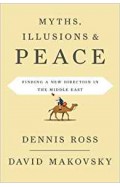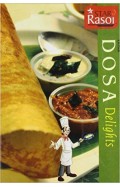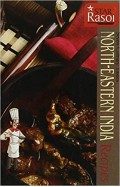India - A History in Objects
By: Richard Blurton
-
Rs 8,546.25
- Rs 11,395.00
- 25%
You save Rs 2,848.75.
Due to constant currency fluctuation, prices are subject to change with or without notice.
Arranged chronologically, and abundantly illustrated with expertly selected objects, this superb new overview connects today’s India with its past. Early chapters uncover prehistoric objects from 1.5 million years ago, examine artefacts from the Indus Civilization, and follow the emergence and transmission of Buddhism, Jainism, Hinduism and Sikhism, as well as the incoming religions of Zoroastrianism, Islam and Christianity. During the medieval era, skills related to temple-building and sculpture-production in stone and bronze developed. From this remote period up to the present day, pilgrimage has been an important part of the spread of social, political and religious ideas. With the rise of the Mughals, the last Muslim dynasty of India, India once more became a leading economic power. The development of a distinct Mughal style can be traced in paintings, hardstone carving and metalwork. Following the advent of Europeans in India in the early Mughal period, trade in spices, textiles and other luxury goods increased. Later, in the 19th century, under British rule, much of South Asia became part of a national and international trade complex that saw Indian goods exported throughout the world. Modernism and political independence in the 20th century saw the fresh assertion of Indian culture through cinema, dance and music.
An extraordinary range of history and culture is presented here, from the splendour of dynastic empires to the rural, and tribal life of the subcontinent. This is a compelling visual history of some of the world’s oldest cultures.
Arranged chronologically, and abundantly illustrated with expertly selected objects, this superb new overview connects today’s India with its past. Early chapters uncover prehistoric objects from 1.5 million years ago, examine artefacts from the Indus Civilization, and follow the emergence and transmission of Buddhism, Jainism, Hinduism and Sikhism, as well as the incoming religions of Zoroastrianism, Islam and Christianity. During the medieval era, skills related to temple-building and sculpture-production in stone and bronze developed. From this remote period up to the present day, pilgrimage has been an important part of the spread of social, political and religious ideas. With the rise of the Mughals, the last Muslim dynasty of India, India once more became a leading economic power. The development of a distinct Mughal style can be traced in paintings, hardstone carving and metalwork. Following the advent of Europeans in India in the early Mughal period, trade in spices, textiles and other luxury goods increased. Later, in the 19th century, under British rule, much of South Asia became part of a national and international trade complex that saw Indian goods exported throughout the world. Modernism and political independence in the 20th century saw the fresh assertion of Indian culture through cinema, dance and music.
An extraordinary range of history and culture is presented here, from the splendour of dynastic empires to the rural, and tribal life of the subcontinent. This is a compelling visual history of some of the world’s oldest cultures.
Zubin Mehta: A Musical Journey (An Authorized Biography)
By: VOID - Bakhtiar K. Dadabhoy
Rs 472.50 Rs 1,050.00 Ex Tax :Rs 472.50
Myths Illusions and Peace: Finding a New Direction for America in the Middle East
By: Dennis Ross
Rs 876.00 Rs 1,095.00 Ex Tax :Rs 876.00
The Origins of Political Order From Prehuman Times to the French RevolutioN
By: Francis Fukuyama
Rs 3,116.00 Rs 3,895.00 Ex Tax :Rs 3,116.00
Manning Up: How the Rise of Women Has Turned Men into Boys
By: Kay Hymowitz
Rs 646.75 Rs 995.00 Ex Tax :Rs 646.75
The Obama Syndrome: Surrender At Home War Abroad
By: Tariq Ali
Rs 1,036.00 Rs 1,295.00 Ex Tax :Rs 1,036.00
The Quest For Meaning: Developing A Philosophy Of Pluralism
By: Tariq Ramadan
Rs 1,116.00 Rs 1,395.00 Ex Tax :Rs 1,116.00
No similar books from this author available at the moment.
No recently viewed books available at the moment.
Zubin Mehta: A Musical Journey (An Authorized Biography)
By: VOID - Bakhtiar K. Dadabhoy
Rs 472.50 Rs 1,050.00 Ex Tax :Rs 472.50













-120x187.jpg?q6)







-120x187.jpg?q6)





